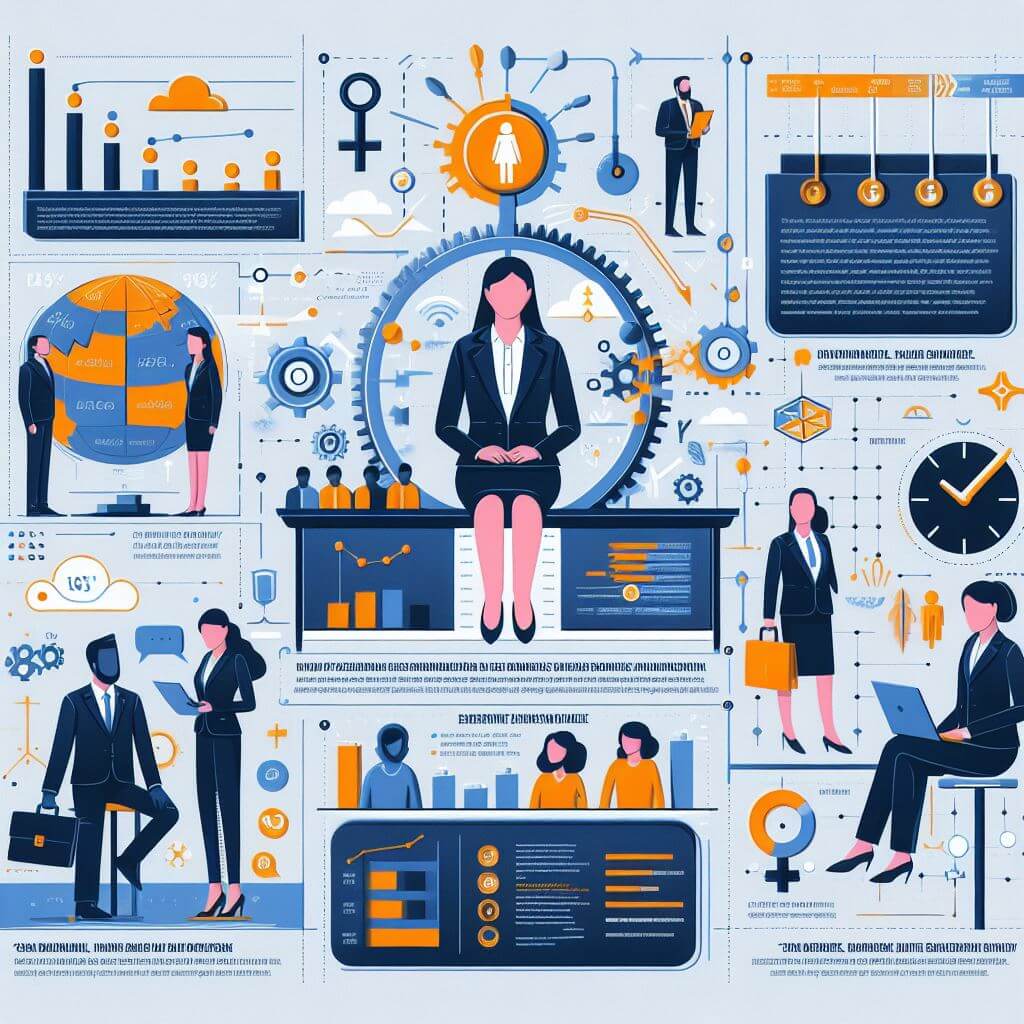In our modern society that preaches and strives for equality, it is sad to find that the roots of gender discrimination are still deeply rooted, affecting various aspects of life, including our relationships. This discrimination, often subtle and systemic, significantly affects how people treat each other in personal, professional, and social contexts. By understanding these implications, we build a clearer picture of the pervasive nature of gender bias and its potential to strain or even tear apart relationships.
Subtle Deformations And Apparent Tension
Subtle distortions and apparent tensions form the undergrowth in the forest of gender discrimination in relationships, subtly influencing and ultimately shaping the nature of personal interactions. These manifestations of gender bias, while often not as obvious as their more overt counterparts, have a profound and lasting effect on the dynamics between partners. Society’s imposition of traditional gender roles, for example, creates conditions where men and women feel forced to conform to outdated norms, leading to an environment ripe for conflict and discontent. Men burdened with expectations of being the primary providers can find themselves trapped in a cycle of never-ending work, trying to fill a role that leaves little room for personal fulfillment or emotional connection. At the same time, women tied to the role of caregiver or homemaker may struggle with feelings of isolation and lack of identity outside of these roles, which exacerbates feelings of undervalue and invisibility in relationships.
 These entrenched stereotypes fuel a form of subtle communication breakdown where each partner can feel misunderstood or cheated, preventing genuine connection. This atmosphere is further polluted by societal norms that commodify women’s bodies and value toxic masculinity, creating an uneven playing field where respect and understanding struggle to thrive. In such conditions, women may struggle with the devaluation of their thoughts and desires, facing a world where their value is often assessed through a superficial prism. At the same time, men are forced to struggle with impossible standards of stoicism and invulnerability, suppressing the emotional needs and vulnerabilities that are essential to forming deep, meaningful relationships.
These entrenched stereotypes fuel a form of subtle communication breakdown where each partner can feel misunderstood or cheated, preventing genuine connection. This atmosphere is further polluted by societal norms that commodify women’s bodies and value toxic masculinity, creating an uneven playing field where respect and understanding struggle to thrive. In such conditions, women may struggle with the devaluation of their thoughts and desires, facing a world where their value is often assessed through a superficial prism. At the same time, men are forced to struggle with impossible standards of stoicism and invulnerability, suppressing the emotional needs and vulnerabilities that are essential to forming deep, meaningful relationships.
This mix of expectations and stereotypes creates a vicious circle of misunderstandings as people find themselves fulfilling prescribed roles that don’t necessarily match their true selves or desires, leading to a rift in relationships. The effects of these subtle tensions and overt tensions can manifest in many ways, from a pervasive sense of loneliness in a partnership to a seething resentment that can eat away at the foundations of even the strongest bonds. The impact on intimacy and connection is profound, as partners can become withdrawn, feeling isolated, and unsupported, thereby reducing the quality and depth of their interactions.
Addressing these issues directly requires a concerted effort to eradicate the entrenched beliefs and behaviors that underlie gender discrimination. It calls for a collective awakening to the subtle cues and overt pressures that determine how relationships are formed and maintained. Engaging in open dialogue, fostering mutual understanding, and valuing each partner’s unique contribution outside of traditional relationship norms can overcome these entrenched barriers. This endeavor, however difficult, holds the key to unlocking a realm of relationships defined not by societal expectations, but by genuine connection, understanding, and equality.
Imbalance Between Work And Personal Life
Work-life imbalance is a significant danger in relationships, vividly illustrating the destructive effects of gender discrimination on personal connections. In today’s fast-paced world, the need to achieve professional success while fulfilling personal responsibilities creates a battleground for individuals, especially when viewed through the lens of gender roles. Women, who are often perceived as the primary caregivers, find themselves juggling a career with the lion’s share of domestic responsibilities, a balancing act that stretches their personal and professional lives. This “double burden” is not only a testament to their resilience but also a stark indicator of the inequality that persists in how responsibilities are distributed by gender. The tension created by this imbalance can lead to stress, burnout, and a creeping sense of being constantly overwhelmed, which in turn casts a long shadow over relationships. Women in this position may feel that they do not meet the impossible standards set by society, leading to feelings of guilt, frustration, and resentment that can strain relationships with their partners.
Conversely, men are not immune to the pressures generated by gender expectations. The stereotype that their primary role is that of breadwinner leads many men to prioritize work over family, often at the cost of personal fulfillment and family ties. This not only perpetuates the cycle of absent fathers and distant partners but also forces men into a role that may not align with their values or desire for family involvement. The ripple effect of this imbalance is distancing within the family, where emotional disconnection and missed life moments can become the norm rather than the exception.
Moreover, the general expectation that women seamlessly manage both career aspirations and home life often ignores the fact that these dual pressures leave them with little choice or agency. Public applause for the ability to “do it all” masks deep-seated discrimination that forces women to fill these roles regardless of personal cost. At the same time, stigmatization of men taking a more active role in home life or prioritizing family over work persists, underscoring rigid gender stereotypes that still shape our understanding of work-life balance.
Breaking Cycles And Building Bridges
Breaking the cycle of gender discrimination and the strain it causes in relationships requires a multifaceted approach that combines awareness, action, and advocacy to build bridges to more equitable partnerships. The task is complex and requires an unwavering commitment to tackling deep-seated biases and behaviors that perpetuate inequality. It begins with individual self-reflection, an honest assessment of one’s values, actions, and social norms that influence them. Such self-observation is critical to recognizing the subtle ways in which discrimination manifests itself and preparing the ground for meaningful change. Couples should begin this journey together by creating a safe space for open dialogue where experiences and feelings can be shared without fear of judgment. This communication is fundamental because it allows partners to express their needs, confront differences in their expectations, and jointly chart a course for a more balanced relationship.
Education plays a key role in breaking down gender stereotypes and promoting understanding. By engaging with resources that explore the roots and consequences of gender bias, people can broaden their perspectives and gain a deeper understanding of their partner’s experiences. This knowledge empowers couples to actively counter discriminatory practices in their lives. This includes questioning traditional roles, dividing responsibilities based on ability and preferences rather than gender, and equally supporting each other’s professional and personal aspirations.
In addition, to create an enabling environment that promotes change, it is necessary to build bridges between different spheres of life. This means advocating for workplace policies and practices that recognize and adapt to the diverse needs of employees. Encouraging organizations to implement flexible working hours, ensuring equitable parental leave, and recognizing the value of work-life balance are steps toward removing the systemic barriers that perpetuate gender discrimination. By advocating for these changes, people can help create a culture that values and supports men and women equally at work and at home.
In the community, initiating and participating in forums that discuss gender equality, support groups for men and women to share experiences, and public advocacy on issues of gender discrimination can strengthen the call for change. These collective actions create a ripple effect, influencing societal norms and expectations and gradually shifting the narrative toward inclusion and equality.
On a more personal level, breaking cycles involves constantly injecting gender norms into one’s relationships and wider social circles. This can be as simple as redistributing household responsibilities more equitably, supporting each other’s career goals without respecting traditional gender roles, or collectively rejecting societal pressures that dictate how gender relations “should” function.
